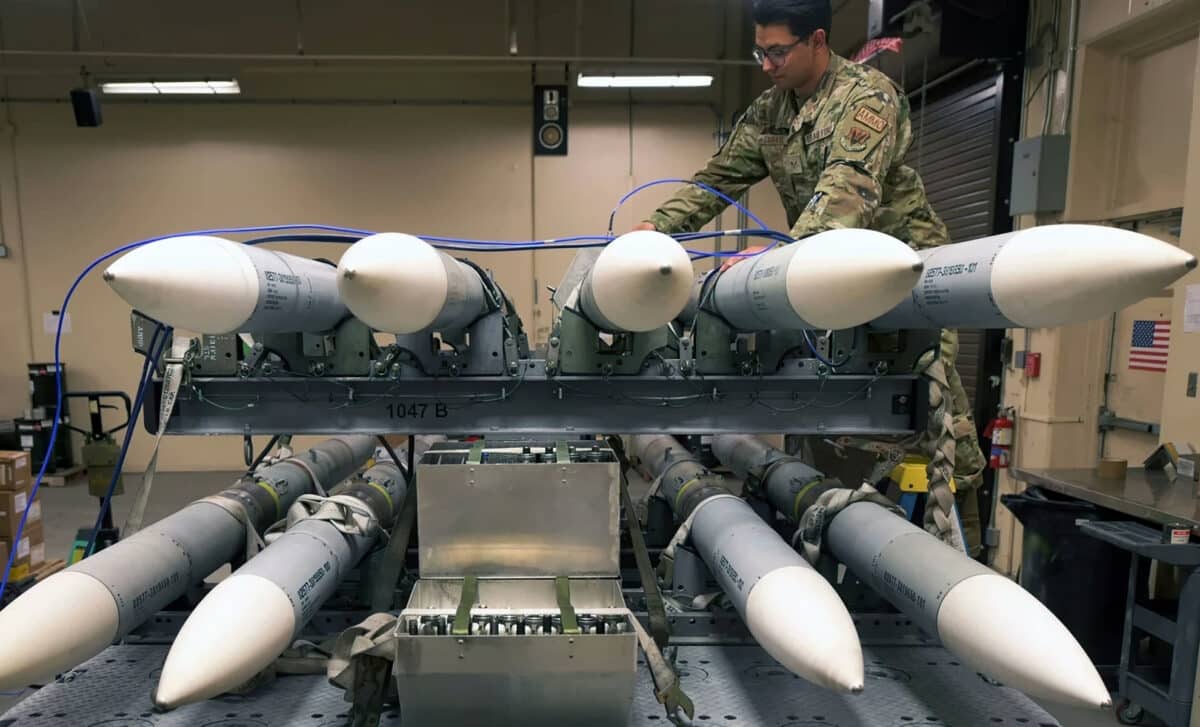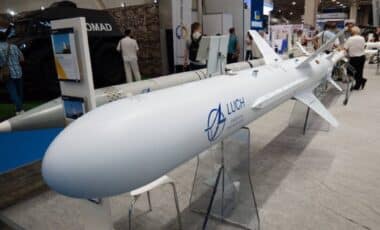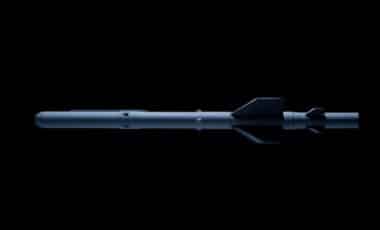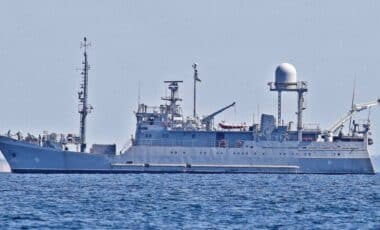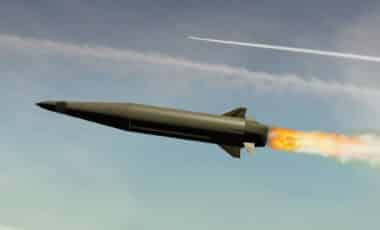The U.S. Air Force has requested an additional $738 million to dramatically increase the production of its AIM-120 Advanced Medium-Range Air-to-Air Missile (AMRAAM). This expansion, aimed at increasing the missile output from 1,200 to 2,400 units per year by Fiscal Year 2028, reflects urgent demands spurred by recent global conflicts and the growing need for military readiness.
The AIM-120 AMRAAM has become a cornerstone of the U.S. Air Force’s air superiority strategy, with its effectiveness in beyond-visual-range (BVR) combat setting it apart from older missile systems. As tensions rise across multiple regions, including the ongoing war in Ukraine and recent Middle Eastern conflicts, the need for this missile has intensified, leading to the current push for more production. The missile’s proven track record, along with its widespread global usage, makes it a vital asset in the U.S. military’s arsenal.
18 Rifles, 250 Years: The Story Behind Every Weapon the U.S. Marine Corps Has Ever Used
The Role of the AIM-120 in Modern Warfare
Originally introduced in the late 1980s, the AIM-120 was designed to address the limitations of earlier air-to-air missiles, such as the AIM-7 Sparrow. Unlike its predecessors, the AIM-120 features autonomous guidance, which allows it to engage targets without requiring the launching aircraft to maintain radar lock during flight.
This “fire-and-forget” capability significantly enhances the flexibility and survivability of pilots in combat scenarios. The missile has evolved over the years with several updated versions, including the AIM-120D, which boasts improved range, guidance, and resistance to electronic countermeasures.
The missile’s success in real-world combat scenarios, such as its debut in Desert Storm in 1991, has established it as a reliable and versatile weapon, capable of engaging targets up to 100 miles away. The AMRAAM’s ability to adapt to a variety of platforms, including the F-15, F-16, F-22, and F-35, has solidified its place as a key component of U.S. air power. As reported by The National Interest, this widespread use of the AIM-120 has also prompted rival nations like China and Russia to develop their own BVR missiles in response.
Global Demand and the Impact on Production
The global demand for the AIM-120 has increased significantly, not just within the U.S. military but also among allied nations. As a standard weapon for NATO and other partner air forces, the missile’s proliferation across the globe underscores its critical role in modern warfare.
The U.S. Air Force’s request to double its missile production reflects both the high demand for this weapon and the depletion of existing stockpiles, particularly following the intense usage of military resources in recent conflicts. The Ukraine War, in particular, has highlighted the importance of maintaining a ready supply of advanced munitions like the AIM-120, which has been used extensively in air-to-air combat.
The proposed budget increase is set to help the U.S. military meet this heightened demand. However, the rapid scaling of production may be complicated by challenges within the defense industrial base. As noted by Breaking Defense, the missile’s high cost—around $1 million per unit—poses significant budgetary constraints, and the industry must find ways to meet these demands without compromising quality or capacity.
Technological Advancements and Strategic Adaptations
While the AIM-120 remains a powerful tool for the U.S. Air Force, the evolving landscape of modern warfare continues to shape the missile’s development. The rise of advanced electronic warfare (EW) systems and stealth technology has placed increasing pressure on the missile’s effectiveness, requiring continuous upgrades to maintain its edge over adversaries.
To address these challenges, Raytheon, the missile’s manufacturer, has been exploring ways to reduce costs while also developing more advanced systems such as the AIM-260 Joint Advanced Tactical Missile (JATM), which promises even greater range and enhanced performance in contested environments.

